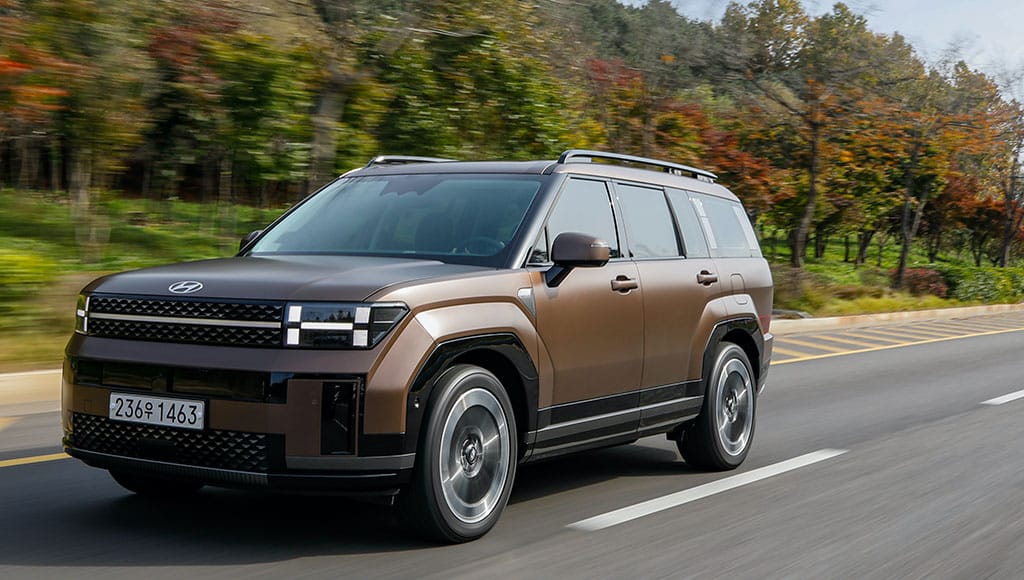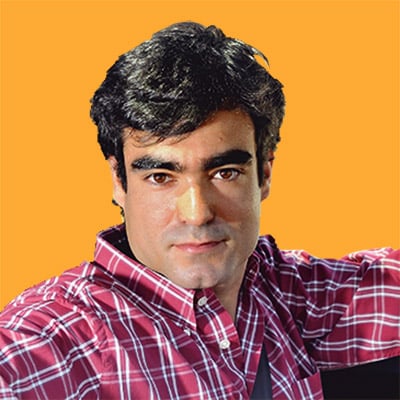The fifth generation of the Hyundai Santa Fe is here to show the Koreans have learned a lot in the last quarter of a century. And I mean a lot.
I went to the launch of the new Hyundai Santa Fe last week and, although I drove the car only for a little over 100km and under two hours, one thought kept creeping up in my mind: if I were the Germans, I would be very, very worried.
Why? Well, simple: because the Santa Fe feels more German than some German cars. Time for that badge snobbery to be cast aside – Hyundai have done an incredible job.
Twenty years ago, BMW, Mercedes and Audi were seen as the premium constructors in the automotive mass market landscape. Then there was Jaguar and Lexus trying to operate in the same wavelength and, above them, we would find Porsche before the all-out luxury names started to make an appearance.
Things have changed quite a lot. Porsche now sells 350,000 cars per year. Maserati builds a diesel saloon, whereas Lamborghini, Ferrari and Rolls-Royce all have an SUV in their catalogues.
Further down the ladder, being premium is not what it used to be. The Germans need to sell over, or at the very least around, two million cars a year – each – to satisfy the stockholders and that means selling a whole bunch of cheaper, smaller cars – and being cheaper to sell necessarily means being cheaper to build.

For the last two decades, customers bought a lot of cars for their premium badge and, sadly, not because the actual engineering was as premium as it used to be.
More troubles then arose for the German brands. The transformation into electricity means it’s much harder to make a premium car feel premium. In other words, the change in propulsion systems has hit the reset button in the industry, at least up to a point, and players who had never dreamt of competing with Beemers, Mercs or Audis are suddenly building objectively better cars, and not just better value.
Hyundai and close cousin Kia are a case in point. The Hyundai Ioniq 5 and 6 and the Kia EV6 and EV9 are four of the best pure electric cars on sale today. When I talk to owners, they tell me they bought them not because they were cheaper than the German competition – they did it because they felt they were more interesting offers and simply liked them more at an emotional level.
Back to the Santa Fe. It’s not electric (yet), but it is hybrid-only. As the longest-running model in Hyundai’s roster in Europe – and always as its flagship – the Santa Fe is an important car in terms of brand perception in the Old Continent.
The new car is so wildly different from its predecessor it looks like it skips a generation, and its design is one of those that you either love or hate. However, one thing is certain: this is not a car that will go by unnoticed.
The boxy looks are incredibly striking and seem like they were made out of a set of Lego bricks. The Santa Fe has always strived to be the definition of a lifestyle SUV and now, it’s safe to say, it has nailed that brief to perfection.
It looks like an off-roader but isn’t really one. It looks modern. It looks technological, even from the outside. And it looks bigger than it actually is, projecting an image of solidity that was usually reserved for the … yes, you guessed it: the Germans.

One of the most important features of the Santa Fe is that it has seven seats. There are not many rivals who can say the same. That makes it an objective choice for families. It’s also just a cool SUV, making it a good subjective choice as well.
On the road, even in a short drive, it’s obvious the step forward the Santa Fe takes compared with the previous model is enormous. There are two versions available at launch, both 4WD, and I drove the non-plug-in one, meaning a self-charging hybrid with the electric motor nested between the 215 hp, 1.6 litre petrol engine and the 6-speed auto transmission.
The Santa Fe does not want to be a sporty SUV and is all the better for it. Quiet, comfortable, compliant, it’s everything an urban SUV should be.
And it’s even better inside. Those seven seats give it a practicality rarely seen in such a cool car, whereas quality, trim, the technology on offer and the way everything is laid out scream that English word Germans tended to have all for their own: premium.
It comes with a sterilizing UV-C tray (yes, really), relaxing massaging seats, a panoramic 12.3-inch curved screen, double wireless charging for mobile phones, a fabulous Bose sound system and over-the-air updates.
Hyundai have not announced fuel averages for the HEV version I drove, nor final pricing. The old diesel model started at just under €65,000 and we were told at launch the price positioning of the new car would be in line with Hyundai’s ability to surprise the market.
They certainly surprised everyone who has driven the new Santa Fe so far. Times are definitely changing. If I were the Germans …





















